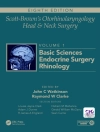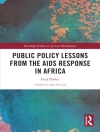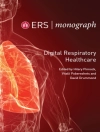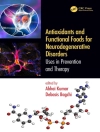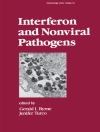Te practice of intensive care medicine is at the very forefront of titration of treatment andmonitoringresponse. Te substrateofthiscareisthe criticallyill patientwho, by defnition, is at the limits of his or her physiologic reserve. Such patients need immediate, aggressive but balanced life-altering interventions to minimize the detrimental aspects of acute illness and hasten recovery. Treatmentdecisionsandresponsetotherapyareusually assessed by measures of physiologic function, such as assessed by cardio-respiratory monitoring. However, how one uses such information is ofen unclear and rarely supported by prospective clinical trials. In reality, the bedside clinician is forced to rely primarily on physiologic principles in determining the best treatments and response to therapy. However, the physiologic foundation present in practicing physicians is uneven and occasionally supported more by habit or prior training than science. A series of short papers published in Intensive Care Medicine since 2002 under the heading Physiologic Notes attempts to capture the essence of the physiologic perspectives that underpin both our understanding of disease and response to therapy. Tis present volume combines the complete list of these Physiologic Notes up until July 2006 with the ass o cia t ed r e vie w a r tic les o v er t h e s a m e in t er val t ha t a ls o addr ess e d t hes e cen tral issues.
Jadual kandungan
Physiological Notes.- Intrinsic (or auto-) PEEP during controlled mechanical ventilation.- Intrinsic (or auto-) positive end-expiratory pressure during spontaneous or assisted ventilation.- Work of breathing.- Interpretation of airway pressure waveforms.- Dead space.- Alveolar ventilation and pulmonary blood flow: the concept.- Mechanisms of hypoxemia.- Pulse oximetry.- Effects of body temperature on blood gases.- Venous oximetry.- Relation between Pa O2/FIO2 ratio and FIO2: a mathematical description.- Pulmonary vascular resistance.- Pulmonary artery occlusion pressure.- Clinical significance of pulmonary artery occlusion pressure.- Pulmonary capillary pressure.- Ventricular interdependence: how does it impact on hemodynamic evaluation in clinical practice?.- Cyclic changes in arterial pressure during mechanical ventilation.- Lactic acidosis.- Defining acute renal failure: physiological principles.- Hypotension during intermittent hemodialysis: new insights into an old problem.- Intracranial pressure.- Intracranial pressure.- Physiological Reviews.- Fluid responsiveness in mechanically ventilated patients: a review of indices used in intensive care.- Different techniques to measure intra-abdominal pressure (IAP): time for a critical re-appraisal.- Tissue capnometry: does the answer lie under the tongue?.- Noninvasive monitoring of peripheral perfusion.- Ultrasonographic examination of the venae cavae.- Sleep in the intensive care unit.- Magnesium in critical illness: metabolism, assessment, and treatment.- Pulmonary endothelium in acute lung injury: from basic science to the critically ill.- Pulmonary and cardiac sequelae of subarachnoid haemorrhage: time for active management?.- Permissive hypercapnia — role in protective lung ventilatory strategies.- Rightventricular function and positive pressure ventilation in clinical practice: from hemodynamic subsets to respirator settings.- Acute right ventricular failure—from pathophysiology to new treatments.- Red blood cell rheology in sepsis.- Stress-hyperglycemia, insulin and immunomodulation in sepsis.- Hypothalamic-pituitary dysfunction in critically ill patients with traumatic and nontraumatic brain injury.- Matching total body oxygen consumption and delivery: a crucial objective?.- Normalizing physiological variables in acute illness: five reasons for caution.- Seminal Studies in Intensive Care.- Manipulating afterload for the treatment of acute heart failure.- Nosocomial pneumonia.- The introduction of positive endexpiratory pressure into mechanical ventilation: a retrospective.- Elastic pressure-volume curves in acute lung injury and acute respiratory distress syndrome.- The concept of “baby lung”.- The effects of anesthesia and muscle paralysis on the respiratory system.- Diaphragmatic fatigue during sepsis and septic shock.- The use of severity scores in the intensive care unit.- Oxygen transport—the oxygen delivery controversy.- Organ dysfunction during sepsis.- Ventilator-induced lung injury: from the bench to the bedside.- Remembrance of weaning past: the seminal papers.


